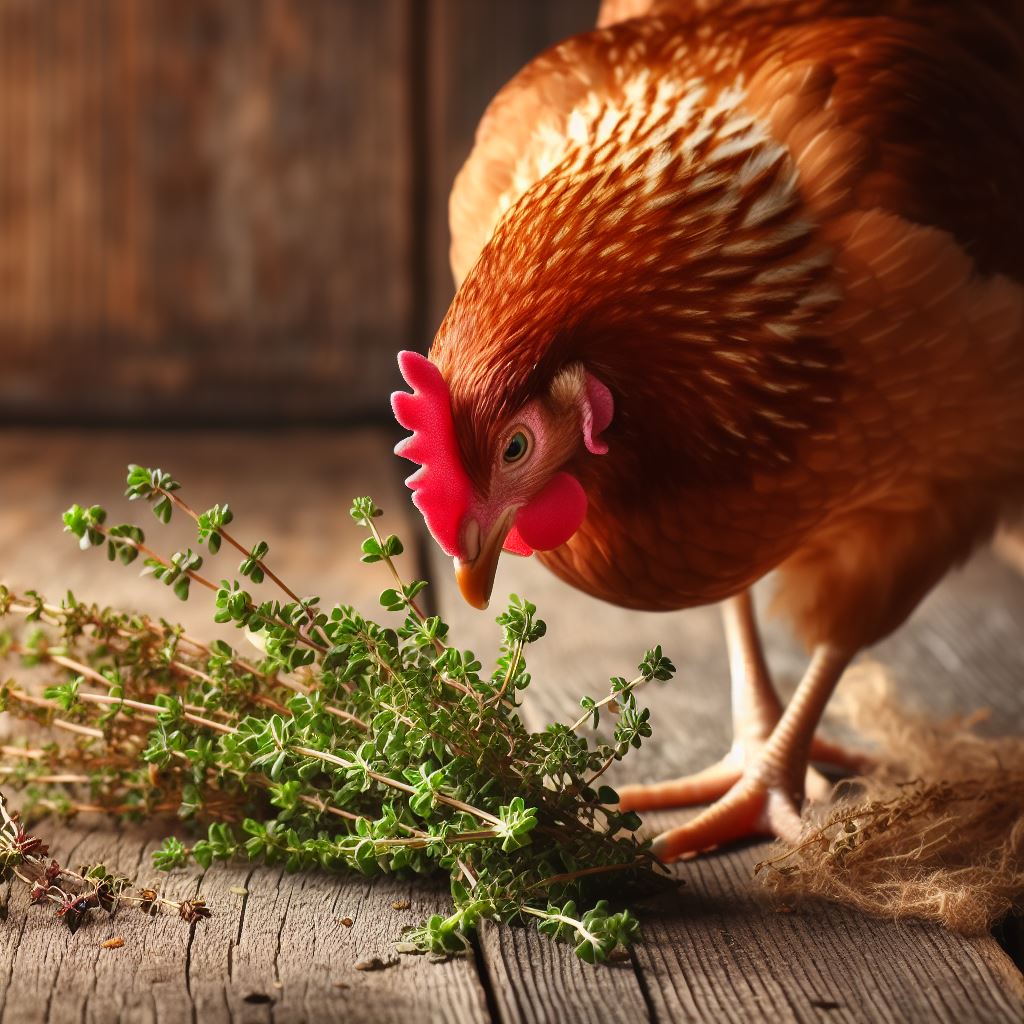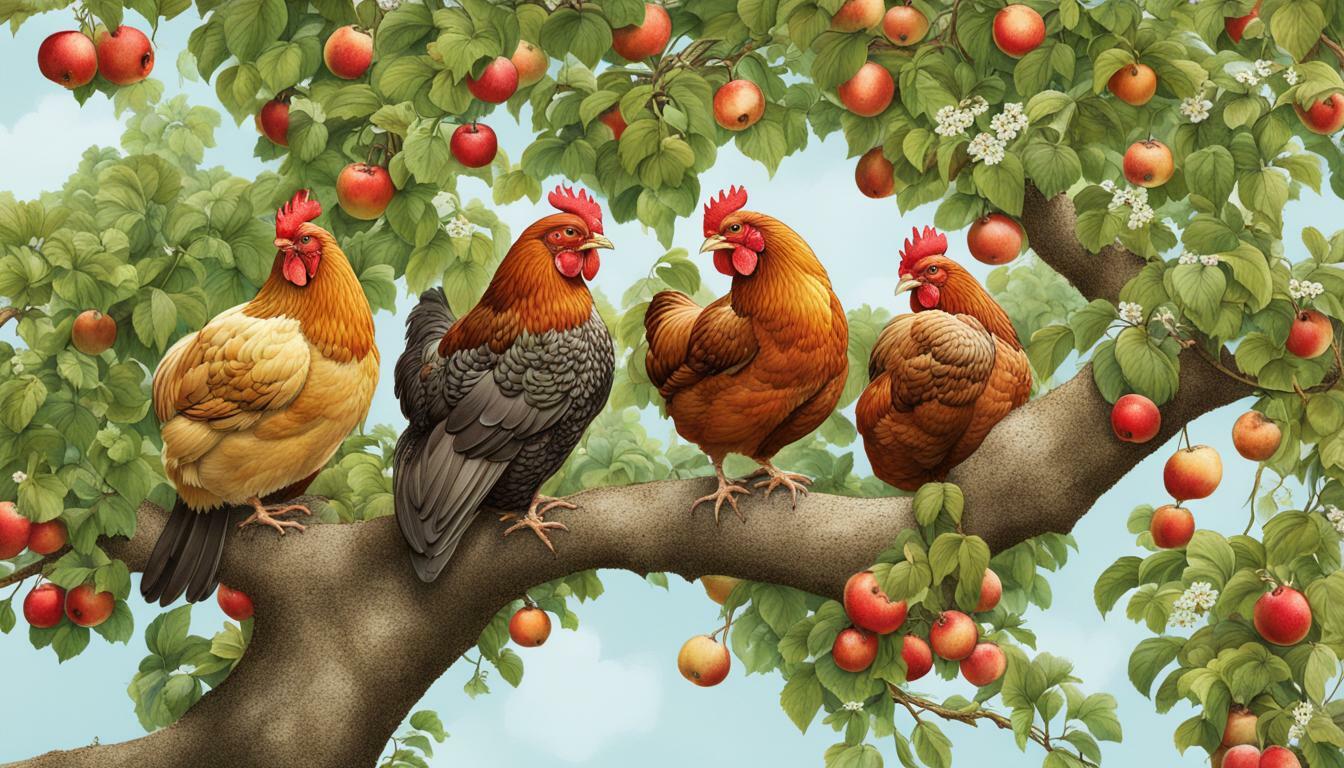Can Chickens Eat Mint?

Table of content:
Mint is a fragrant herb that many people enjoy in foods, beverages, and even beauty products. Its fresh, invigorating scent and flavor make it a popular addition to dishes. While we may relish mint, some chicken owners wonder if it’s safe for their flock.
Can chickens eat mint? The short answer is yes, chickens can eat mint in moderation. Mint offers some potential health benefits for chickens and poses little risk. However, mint should be fed sparingly as part of a balanced diet.
Mint is an aromatic herb that comes in many varieties. Some popular types of mint include:
- Spearmint
- Peppermint
- Catmint
- Pineapple mint
- Chocolate mint
- Orange mint
- Apple mint
These different mint plants can vary slightly in scent and flavor. However, they all contain the signature minty oils that give the herb its refreshing taste and smell.
Mint is a perennial plant that grows easily outside in most climates. It thrives in moist soil and spreads aggressively. Gardeners often plant mint in containers to prevent it from taking over flower beds and veggie patches.
All parts of the mint plant are edible. The leaves are most commonly used, whether fresh or dried. Mint can be added to both sweet and savory foods and beverages. It’s also popular in desserts like mint chocolate chip ice cream.
 Nutritional Value of Mint for Chickens
Nutritional Value of Mint for Chickens
Mint contains several nutrients that can benefit chicken health:
- Vitamin C: Mint is high in immune-boosting vitamin C. One cup of raw spearmint leaves provides 31.8 mg of vitamin C. This aids respiratory health and wound healing in chickens.
- Antioxidants: Mint contains antioxidant compounds like rosmarinic acid and flavonoids. Antioxidants combat cell damage from free radicals.
- Vitamin A: Mint provides vitamin A, especially when fed fresh. Vitamin A supports eye, skin, and feather health in chickens.
- Fiber: Mint leaves offer dietary fiber. Fiber promotes healthy digestion and nutrient absorption.
- Calcium: Mint contains some calcium, though not as high a concentration as other herbs. Calcium is necessary for bone strength and egg production.
- Iron: Mint provides small amounts of iron. Iron carries oxygen in the blood and helps prevent anemia.
- Potassium: This mineral supports nerve signaling and electrolyte balance. It’s plentiful in mint.
While mint won’t provide complete nutrition on its own, it can add small amounts of important vitamins, minerals, and antioxidants to a chicken’s diet.
Benefits of Mint for Chickens
Beyond its nutritional value, mint may offer other advantages for chickens:
- Supports digestion – The fiber, vitamins, and minerals in mint promote gut health and nutrient absorption. Mint may help relieve upset stomachs.
- Boosts respiratory health – The high vitamin C content in mint strengthens the immune system and helps prevent respiratory infections.
- Provides antioxidants – Mint’s antioxidant activity combats cell damage from free radicals that are byproducts of metabolism. This may reduce inflammation and prevent disease.
- Stimulates appetite – The scent and flavor of mint can entice picky eaters to consume more feed.
- Repels rodents – Mint’s strong smell may help deter mice and rats from chicken coops when planted nearby or rubbed on housing.
- Soothes skin irritations – Some chicken keepers apply dried mint leaves to chickens’ legs to repel mites and soothe irritated skin. However, research is lacking on the efficacy and safety of this use.
While mint likely provides more subtle benefits, it can be a healthy supplemental treat for chickens.
Are There Any Risks of Feeding Mint to Chickens?
Mint leaves and stems don’t pose much risk to chickens. However, there are a few considerations:
- Pesticide exposure – Conventionally grown mint may contain pesticide residues. Organic or homegrown mint is ideal. Wash store-bought mint before feeding.
- High oil content – The essential oils that give mint its fragrance can cause stomach upset in excess. Feed mint sparingly.
- Spreading vines – Mint can take over space rapidly. Don’t plant it directly in chicken runs. Potted mint works well.
- Allergies – It’s possible for chickens to develop contact dermatitis from topical mint applications. Discontinue use if signs of an allergic reaction appear.
Overall, mint is low risk. But chickens prone to digestive upset or allergies may be sensitive. Monitor your flock when introducing new foods.
How Much Mint Can Chickens Eat?
Mint should be fed in moderation as part of a balanced diet. Here are some feeding guidelines:
- Limit mint to 1-2 times per week as an occasional treat.
- Feed 1-2 tablespoons of fresh mint leaves per chicken at a time.
- Chop or tear mint leaves into smaller pieces so chickens don’t choke.
- Introduce dried mint sparingly at first until tolerance is confirmed. Use approximately 1 teaspoon per chicken.
- Mix mint with regular feed instead of offering it alone to prevent overconsumption.
- Remove any uneaten fresh mint within 24 hours to prevent spoilage.
Follow these portions to keep total intake low. Overindulging in mint may cause loose droppings. Also, rotate mint with other fresh herbs and greens to provide variety.
How to Offer Mint to Chickens
Mint is easy to add to your flock’s diet. Here are some methods:
- Add chopped fresh mint to feed – This masks the strong scent and flavor while ensuring even intake. Mix about 1-2 tablespoons of chopped mint per chicken into feed.
- Hang mint bundle in run – Hang fresh sprigs or a mint bundle for chickens to nibble when they choose. Provide additional feed to prevent overeating.
- Mix into treats – Incorporate chopped mint into homemade snack mixes, herbal pastes, yogurt, etc.
- Create mint infused water – Steep fresh mint in chickens’ drinking water. Use approximately 1 teaspoon dried or 1 tablespoon fresh leaves per gallon of water. Replace daily.
- Offer mint plant in run – Potted mint lets chickens graze leaves at will. Monitor for overconsumption and rotate plants to prevent boredom.
Start slowly with small quantities if introducing mint for the first time. Ultimately it’s a flavorful, nutritious supplement chickens enjoy.
Conclusion
Chicken keepers can safely offer mint to their flocks in moderation. The herb provides nutritional benefits thanks to its vitamin, mineral, and antioxidant content. Mint may also promote respiratory health, stimulate appetite, and relieve digestive upset.
To reap these bonuses without risk, feed mint as a supplemental treat 1-2 times weekly. Limit intake to 1-2 tablespoons of chopped fresh mint per chicken at a time. Mix mint into feed or serve in moderation along with regular rations. Avoid letting chickens overindulge.
Providing varied herbs, greens, and treats keeps chickens active and engaged with their environment. Mint is one excellent addition that provides natural stimulation along with supplemental nutrition.
Welcome. I’m Adreena Shanum, the proud owner of this website, and I am incredibly passionate about animals, especially poultry. I founded adreenapets.com as a labor of love, stemming from my desire to share my knowledge and experiences with poultry enthusiasts worldwide.




